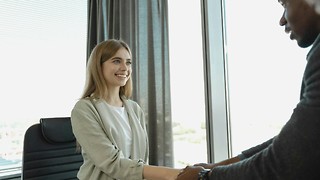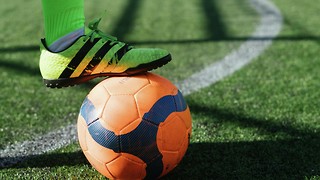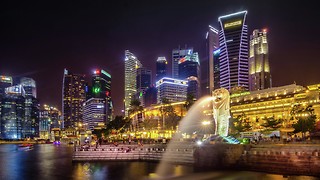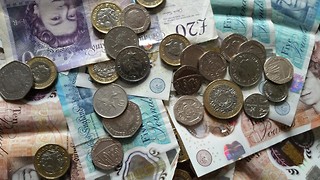Berlin: The city that’s a work of art
Lavinia Puccetti explores the vibrant German capital where art collides with urban life

My initial interest in visiting Berlin, prior to travelling there two weeks ago, lay in extending my art history knowledge to non-Western art, by exploration of the African collection in the Dahlem Ethnological museum. Happily, if unexpectedly, I realised after one week in the city that Berlin itself was a work of art.
Never before have I visited a city where art is so a part of the urban. When walking parallel to Friedrichstraße, I suddenly came across giant pink and purple pipes which looped above crossroads, sneaked around corners, running along the streets finally to disappear up into the sky at the next traffic light. They seemed to walk with you. What were they? Tube mail, heating pipes or some giant artwork? I thought that those pipes must have had a practical function. In fact, they pump away the water towards the Spree or next canal from the foundation pit of new buildings, which makes the idea even more admirable; constructional necessity is turned into an artwork and is not disguised, but rather metamorphosed into a display. The guts of the city are exposed and turned into a giant artistic installation running through its whole body like coloured veins and arteries.

The next morning, I found myself discussing the ‘pipe mystery’ with my friend David, over café crème at Kamps near Checkpoint Charlie. I thought that this artistic choice was not only aesthetic, it was moral: Berliners are not afraid of showing the pipes of their city, nor are they afraid of confronting and displaying the scars of their historical past. That same day I set off to visit the Neue Synagogue in Spandauer Vorstadt, reconstructed after World War II in its anterior part. The façade is richly decorated in polychromatic red and white bricks, flanked by projecting side towers, and topped by octagonal cupolas which visually anticipate the golden tracery of the steel and glass central dome.
I bought a ticket to enter not only the exhibition, but the dome as well: once I entered its chamber, I didn’t find gilded iron buttresses, nor frescoes or arabesques, but bare white walls. I wrote in my notebook, "I am in the dome of the new Synagogue. I feel sorry and melancholic for the loss of the great hall of which only a woodcut remains. The reconstructed dome seems to recall the Hagia Sophia, but whilst the latter is rather plain from the outside, and richly ornate inside, here the opposite is realised. The design echoes the Moorish style of the Alhambra in Granada, and at the same time, the new dome is a triumph of modern architecture because of its use of iron and steel techniques, just like England's Crystal Palace, which was also destroyed. Can art withstand time? It truly gives a sense of suffering and cultural loss to feel the emptiness of this room and be confronted with crude white walls."

Berliners do not reject or deny their history, nor do they reconstruct wounded buildings as they were prior to destruction. Berlin likes honesty and authenticity and dislikes fakes. This is not only evident in the empty walls of the dome chamber - where panels of the history of the synagogue are purposefully on display, as if to say "our dome is apparently empty, because its plain walls are a testimony to its history" - but also in the Kaiser-Wilhelm-Gedächtniskirche. In fact, the church was bombed during World War II and its truncated tower has not been repaired since then. What was once a functional building has been transformed into a monument, a work of art which is, by definition, a place of memories and history.

One could ask in objection: "So is Berlin constantly looking backwards?". The answer is a "definitely not". In fact, in 1957, the ‘der hohle Zahn’ (the broken tooth), was flanked by a modern hexagonal tower made out of a concrete honeycomb frame containing 21,292 stained glass inlays. The glass was designed by Gabriel Loire and inspired by the colours of the glass in Chartres Cathedral. The predominant colour is blue, with small areas of ruby red, emerald green and yellow. Concrete and glass are the materials of our contemporary society, hence a symbol of the present. The juxtaposition of the two towers thus create continuity, while also showing that the present is different, testifying for Berlin’s projection into the future. The two buildings show varied ideas of beauty: the Gedächtniskirche projects its pointed towers and mutilation, while the new tower appears apparently subdued, especially when observed during daytime. During night, however, it transforms into a stream of light,flowing on the inside and glowing on the outside.
During the weekend I visited Checkpoint Charlie. While walking, I heard an Italian tourist say, in skeptical tones: "In this city they doodle on every single wall: murals are everywhere". In fact, right near Checkpoint Charlie fragments of the wall had been decorated with lego caricatures of the Presidents of Chad and Sudan as well as the supreme leader of North Korea. Near Sclesisches Tor, a huge mural shows a monstrous giant made out of a collage of pink bodies of children, eating another child painted in white. It reminded me the dangers of populism, while exorcising it. Another one shows men catching diamonds with their nets. A mural on the wall of the east side hotel shows a couple engaging in sexual intercourse, on the back of the woman is tattooed a quote of Governing Mayor, Klaus Wowereit: "Berlin ist arm, aber sexy". While walking on the The Oberbaum Bridge towards the eastside gallery, my attention was captivated by a stencil of a girl, seen from behind and holding a gun. It was Banksy style and just above her was the motto: "Art is my weapon". I felt that this stencil revealed the whole picture and provided a good answer to the criticisms of the Italian tourist: Berliners transformed the Wall from an instrument of division, a special monochromatic symbol of oppression, to a space of freedom and liberation. Through art, the city experienced a catharsis- one which did not involve a rejection of the past, but rather employed its ruins to create something better: an artwork that projects into the future.
Of all the artifacts exhibited in the African collection at the Ethnography museum, the fetish figures Minkisi from the Congo Basin and the performances masks particularly elicited my interest. For instance, a terracotta statue of a female figure, collected in 1904 in Congo, kneels in front of the viewer, still with her chest open and upright. Her arms point to her womb, and to the circular scar, which marks it, like handles of a Greek amphora. Immediately above the scar, between the two breasts, a needle is inserted. At the level of the genitals, two children faces emerge from a network of fabric and ropes enveloping the woman’s hips like a nest. The two heads look like eggs themselves. What I thought impressive was the juxtaposition of the concept of unity and duality. In fact the mother is one and her silhouetted face and large neck symbolises that, while the breasts, the arms, the children’s heads are two: from one needle piercing the womb, creating a single egg (the circular scar) two beings came to life.
Interestingly ‘Minkisi’ figures created a connection and interchange between the world of the living and that of the dead. They centre on the concept of a reciprocating universe. ‘Minkisi’ is both the personalised form from the land of the dead, as well as an object that serves as the embodiment of the spiritual entity. The use of the same word for both form and statue seems to detonate that there is no opposition or barrier between the metaphysical and the physical realm. It follows that art in such a system can have magical power. In order to bind the powers of the invisible world to the figures, potent substances, such as earth from cemeteries or colors from minerals were needed to empower the figure. I found that a little statue from Congo explained this interconected physical-metaphysical world at its best: a simple human being holds a stick in its mouth and its body is turned into a case containing the powerful minerals (the spiritual element), while its head is encircled by blue fabric and its hips by pale green. The hair is made out of straw and feathers. All these are natural elements: nature is connected through art (the statue itself) to the immaterial world (the powder in the case).
Berlin is dense with art and if the history of the city is its canvas, graffiti, non-western art, pipes running like snakes and mutilated buildings are its palette. More than anywhere, I felt the voyeuristic pleasure of seeing when walking around its streets and squares: it was not said by chance that "Berlin ist arm, aber sexy."
 News / Students form new left-wing society in criticism of CULC3 September 2025
News / Students form new left-wing society in criticism of CULC3 September 2025 News / Tompkins Table 2025: Trinity widens gap on Christ’s19 August 2025
News / Tompkins Table 2025: Trinity widens gap on Christ’s19 August 2025 News / Cambridge’s tallest building restored to former glory1 September 2025
News / Cambridge’s tallest building restored to former glory1 September 2025 News / Council rejects Wolfson’s planned expansion28 August 2025
News / Council rejects Wolfson’s planned expansion28 August 2025 Interviews / GK Barry’s journey from Revs to Reality TV31 August 2025
Interviews / GK Barry’s journey from Revs to Reality TV31 August 2025








